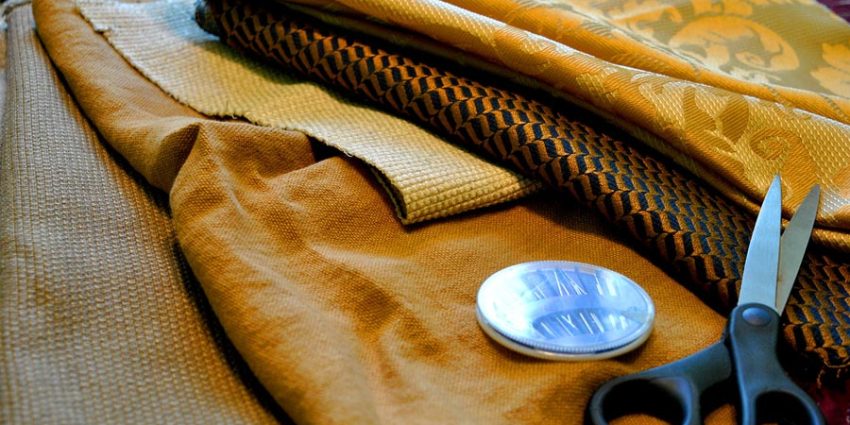Upholstery is an art that combines functionality with aesthetics, a craft steeped in rich history and meticulous detail. But have you ever wondered about the tools that bring these creations to life? Antique upholstery tools are not just instruments; they are relics of an enduring legacy, each with a story to tell. Let’s dive into the fascinating history and significance of these tools, and explore the legacy they carry with every stitch.
Tracing the Origins of Upholstery Tools
The journey of upholstery tools begins in ancient civilizations. Imagine rudimentary tools crafted from bones or wood, used to manipulate fabric and create intricate designs. As societies advanced, so did the tools. By the Middle Ages, specialized implements began to emerge, reflecting the increasing complexity of upholstery work. These early tools were often handcrafted by skilled artisans, each one unique and tailored to specific tasks.
Fast forward to the Renaissance and beyond, and we see the introduction of more refined tools made from metal and other durable materials. This period marked significant advancements in craftsmanship and technology, paving the way for the sophisticated tools we recognize today. Each era contributed to the evolution of upholstery tools, making them more efficient and specialized.
Exploring Antique Upholstery Tools
Antique upholstery tools are a testament to the ingenuity and artistry of past craftsmen. Let’s take a closer look at some of these timeless implements:
- Hammers and Tack Pullers: Essential for securing and removing upholstery tacks, these tools often featured beautifully carved wooden handles and meticulously forged metal heads.
- Shears and Scissors: Crafted from high-quality steel, antique shears were designed for precision cutting. The handles were often ornately decorated, showcasing the blacksmith’s skill.
- Needles and Awls: These tools came in various shapes and sizes, each tailored for specific tasks like stitching, tufting, or creating decorative details. The craftsmanship extended to the handles, which could be intricately carved from wood or bone.
The attention to detail in these tools is astounding. Many feature intricate carvings, engravings, and decorative embellishments that not only made them functional but also beautiful. These details reflect a time when tools were valued not just for their utility but also as works of art.
The Role of Upholstery Tools in Tradition and Innovation
Antique upholstery tools are more than just relics; they are guardians of tradition. They preserve techniques and skills passed down through generations, ensuring that the art of upholstery remains vibrant. These tools have been used to create everything from royal thrones to everyday furniture, each piece a testament to the artisan’s skill and dedication.
But it’s not all about looking back. Antique tools continue to inspire modern innovations in tool design and manufacturing. Contemporary toolmakers often draw on the designs and materials of these antique pieces, blending tradition with modern technology to create tools that are both functional and beautiful. This fusion of old and new keeps the craft evolving while honoring its rich heritage.
Stories from the Workshop
The true magic of antique upholstery tools lies in the stories they tell. Imagine a master upholsterer from the 19th century, carefully using a handmade tack hammer passed down from his father. Each tool bears the marks of countless projects, each dent and scratch a testament to its use and the craftsman’s journey.
Consider the tale of a family heirloom—an antique set of shears discovered in a dusty attic, having been used by generations of upholsterers in the family. Such tools are more than just functional objects; they are pieces of history, carrying the legacy of those who used them. They connect us to the past, offering a tangible link to the craftsmen and women who dedicated their lives to perfecting their art.
Preserving Upholstery Heritage
Preserving these antique tools is crucial for maintaining the rich tapestry of upholstery heritage. Museums, historical societies, and private collectors play a vital role in this effort. By archiving and showcasing these tools, they ensure that future generations can appreciate and learn from the craftsmanship of the past.
Efforts to preserve these tools also include documenting their history and provenance. Each tool tells a unique story, whether it’s a handmade needle used in a royal palace or a humble tack puller from a small village workshop. By preserving these stories, we honor the legacy of the artisans who used them and keep their traditions alive.
Conclusion
Antique upholstery tools are more than just implements; they are a bridge to the past, embodying the skill, dedication, and artistry of generations of craftsmen. Their legacy is woven into the fabric of every piece they helped create, a testament to the enduring nature of quality and craftsmanship. As we continue to innovate and evolve in the field of upholstery, let’s remember and honor the tools and traditions that laid the foundation for our work today. Explore your own connection to this rich heritage, and appreciate the legacy embedded in every stitch.

